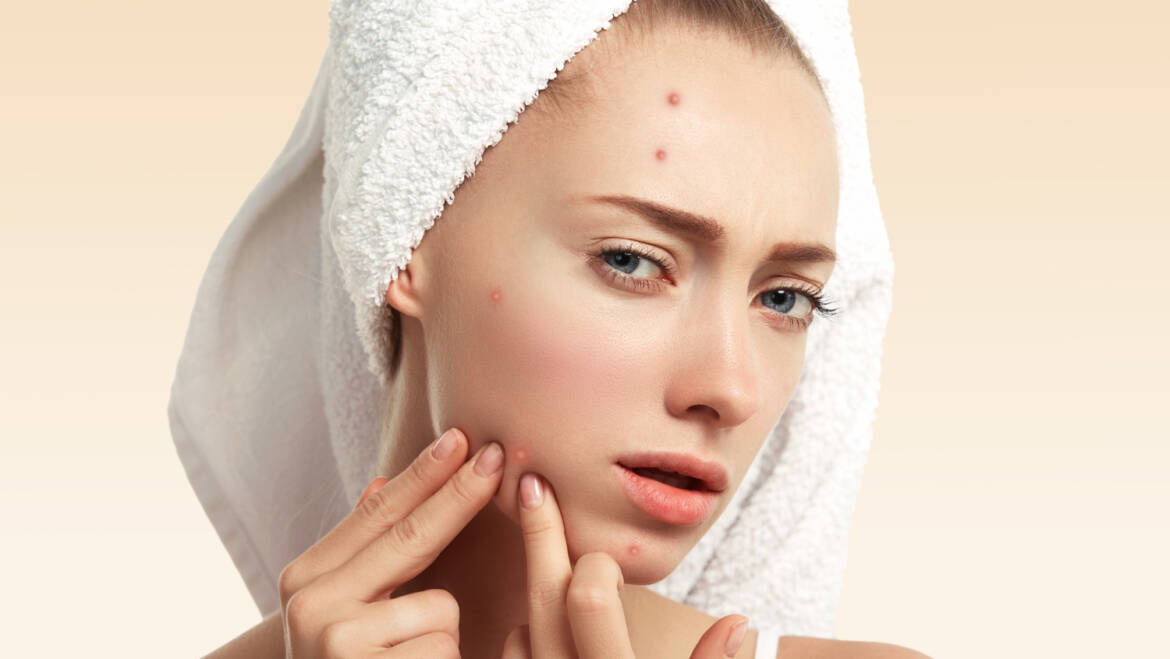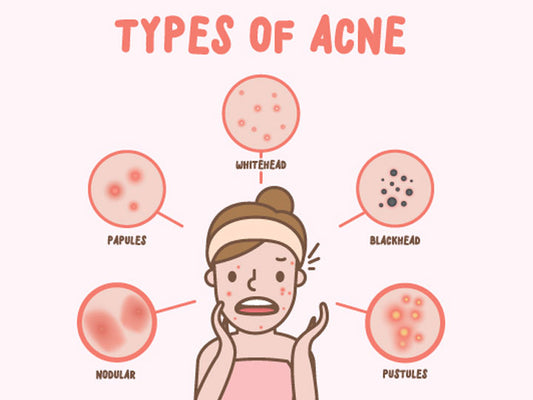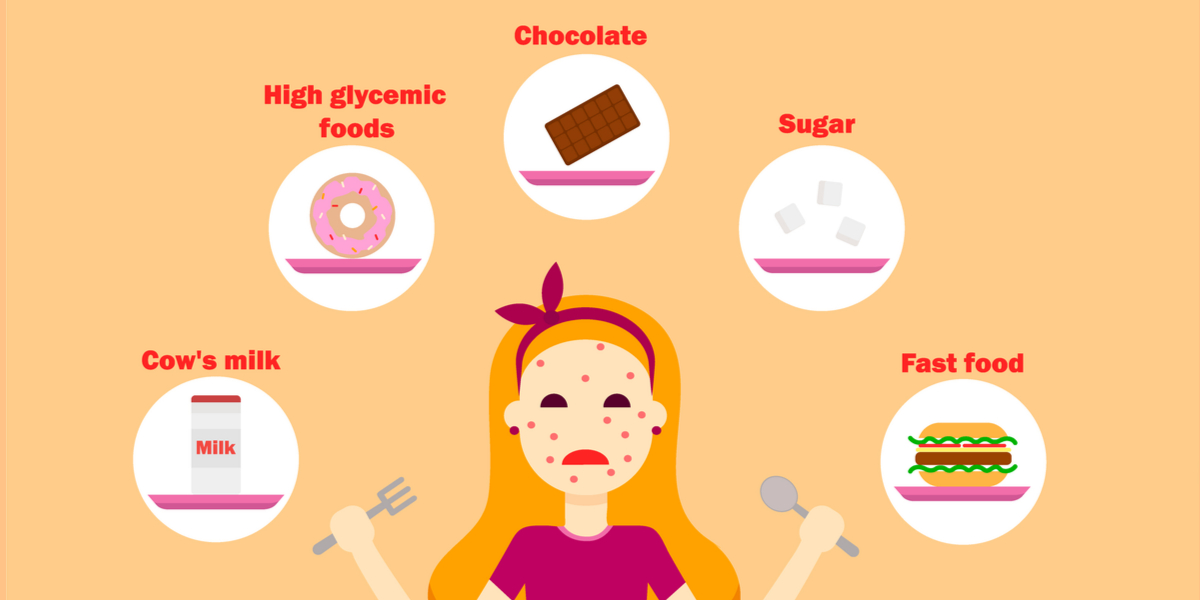“Explore acne types, causes, treatments, and prevention tips. Learn how to manage and prevent breakouts for clearer, healthier skin.”
Acne is a common skin condition affecting people of all ages, causing not just physical blemishes but often impacting self-esteem. Understanding acne’s various types, causes, treatments, and prevention strategies can help manage and reduce its effects. This comprehensive guide will walk you through everything you need to know about acne, from identifying different types to exploring effective treatments and preventive measures.
Understanding Acne: An Introduction
Acne is a multifaceted skin condition that primarily affects the face, back, and shoulders. It results from clogged pores due to excess oil, dead skin cells, and bacteria. While it’s most common during adolescence, it can persist into adulthood or even begin later in life. This guide will break down the different types of acne, their causes, available treatments, and preventive strategies to help you achieve and maintain clearer skin.

Types of Acne
1. Comedonal Acne:
This includes blackheads and whiteheads. Blackheads are open comedones where the pore is clogged with oil and dead skin cells but remains open, allowing the contents to oxidize and darken. Whiteheads are closed comedones where the pore is clogged, and the top remains closed, leading to a white or flesh-colored bump.
2. Inflammatory Acne:
This type includes papules, pustules, nodules, and cysts. Papules are small, red, tender bumps. Pustules are similar but have a white or yellow center. Nodules are large, painful lumps that are deeper in the skin, while cysts are large, pus-filled lesions that can cause scarring.
3. Cystic Acne:
A severe form of acne involving deep, painful cysts. This type often leads to scarring and requires aggressive treatment.
4. Hormonal Acne:
Often linked to fluctuations in hormones, especially during puberty, menstruation, pregnancy, or menopause. This type typically appears along the jawline and chin.
5. Acne Rosacea:
This chronic condition causes redness and visible blood vessels on the face, and may include small, red, pus-filled bumps. It is often mistaken for regular acne but requires different treatment.

Causes of Acne
1. Hormonal Changes:
Fluctuations in hormones, particularly androgens, can lead to increased oil production, contributing to acne development. This is common during puberty, menstrual cycles, and pregnancy.
2. Excess Oil Production:
Overactive sebaceous glands produce excess oil, which can mix with dead skin cells and clog pores, leading to acne.
3. Bacteria:
Propionibacterium acnes is a bacterium that thrives in clogged pores, causing inflammation and acne.
4. Diet:
Certain foods, especially those high in sugar and dairy, may exacerbate acne in some individuals, though the evidence is not conclusive.
5. Genetics:
A family history of acne can increase your likelihood of developing the condition.
6. Skin Care Products:
Using comedogenic products (those that clog pores) or improper skin care routines can worsen acne.
7. Stress:
Emotional stress can trigger or worsen acne due to hormonal fluctuations.

Effective Treatments for Acne
1. Topical Treatments:
Over-the-counter products containing ingredients like benzoyl peroxide, salicylic acid, or retinoids can help manage mild to moderate acne by reducing inflammation, unclogging pores, and killing bacteria.
2. Oral Medications:
For more severe acne, oral antibiotics, hormonal treatments (like birth control pills), and oral retinoids (such as isotretinoin) may be prescribed to reduce inflammation and oil production.
3. Professional Treatments:
Dermatologists can offer treatments such as chemical peels, laser therapy, and light therapy to target acne and minimize scarring.
4. Natural Remedies:
Some natural remedies, such as tea tree oil, green tea extract, and aloe vera, may provide mild relief for acne due to their anti-inflammatory and antibacterial properties.
5. Lifestyle Adjustments:
Maintaining a healthy diet, managing stress, and using non-comedogenic skin care products can complement medical treatments and help prevent acne.

How to Prevent Acne
1. Maintain a Consistent Skin Care Routine:
Use a gentle cleanser to remove excess oil and dirt. Avoid harsh scrubbing or over-cleansing, which can irritate the skin and worsen acne.
2. Avoid Touching Your Face:
Minimize touching your face with your hands, as this can transfer bacteria and oils from your hands to your skin.
3. Use Non-Comedogenic Products:
Choose skin care and makeup products labeled as non-comedogenic or oil-free to reduce the risk of clogged pores.
4. Stay Hydrated:
Drinking plenty of water helps keep the skin hydrated and may support overall skin health.
5. Healthy Diet:
Incorporate a balanced diet rich in fruits, vegetables, and whole grains. Consider reducing your intake of processed foods and dairy products if you notice a correlation with acne flare-ups.
6. Manage Stress:
Engage in stress-reducing activities like exercise, meditation, or hobbies to help maintain hormonal balance.
7. Regularly Clean Personal Items:
Ensure that items like pillowcases, phones, and makeup brushes are clean to avoid transferring bacteria to your skin.
Conclusion
Understanding acne’s different types, causes, and treatment options can empower you to take control of your skin health. By incorporating effective treatments and preventative measures into your routine, you can manage and reduce acne effectively. Whether you opt for topical treatments, professional care, or natural remedies, consistent care and lifestyle adjustments play a key role in achieving clearer skin. Explore these strategies to find the best approach for your unique skin needs and maintain a healthy complexion.
